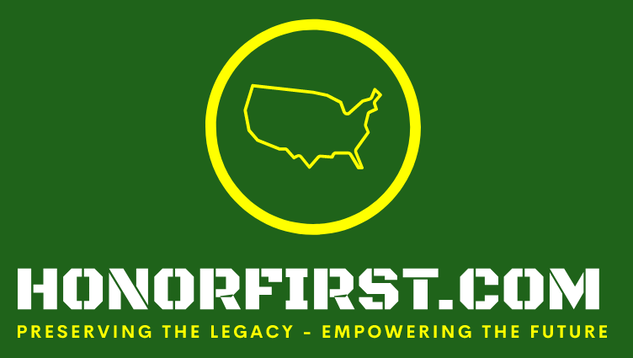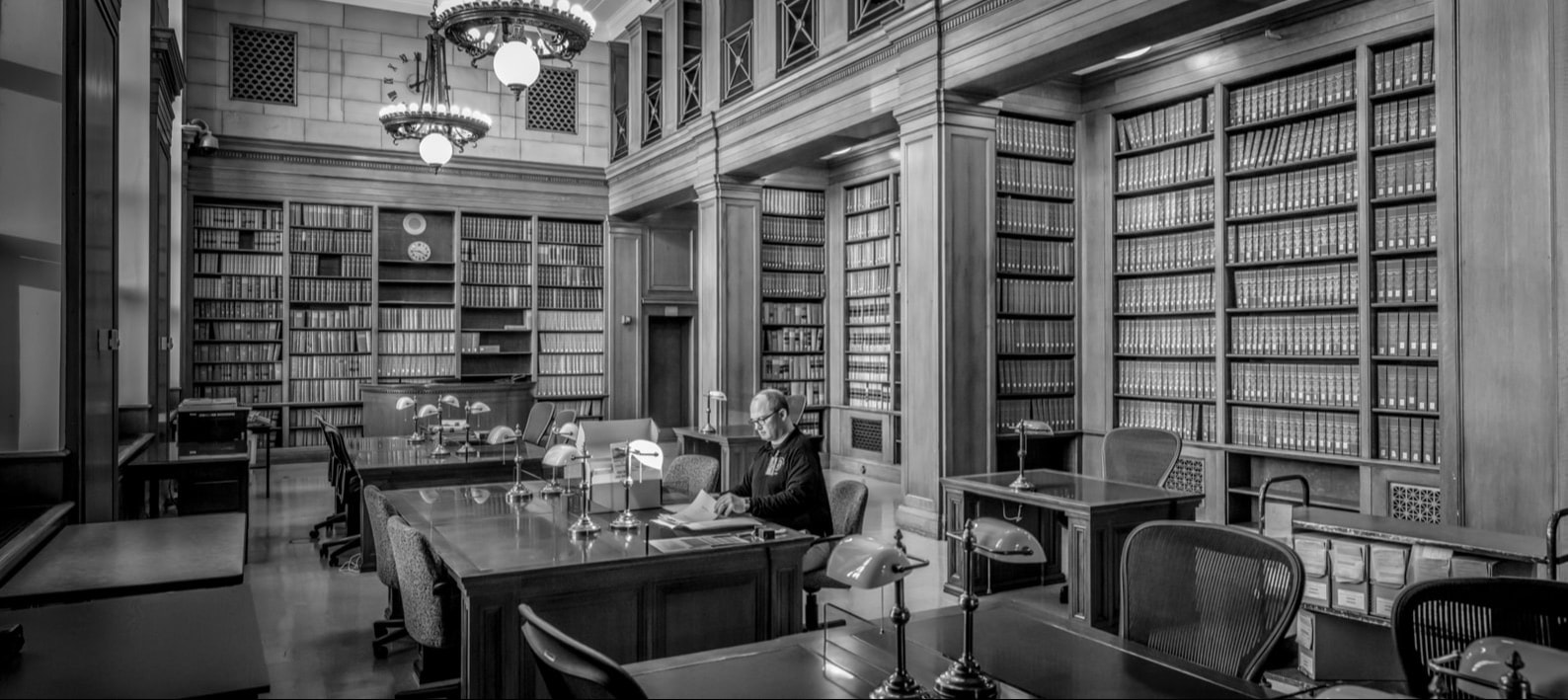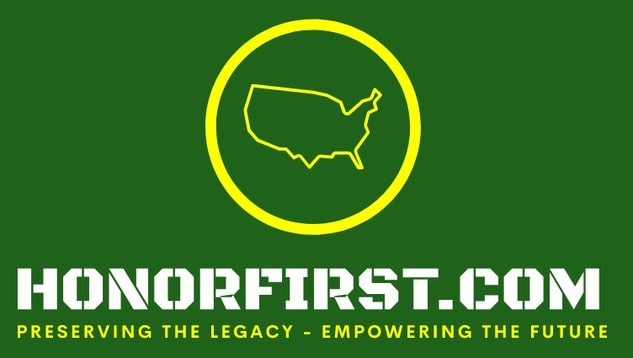U.S. Border Patrol History
The majority of the information below is the result of research based on documents discovered in the National Archives. The photograph above was taken December 2018 as the USBP historian was discovering many of the documents that were used to create this page. Much of the research provided unequivocal evidence that corrected inaccurate USBP history and folklore that had been accepted as fact for decades.
|
Help spread the word!
|
Last updated - May 16, 2022
All of the green buttons are links to pages that provide greater details.
|
Discover the fascinating story of Frank Walton Berkshire, the visionary who pioneered the concept of the Border Patrol in the United States. Learn how his tireless efforts and innovative proposals laid the groundwork for the modern Border Patrol, and how he navigated bureaucratic hurdles to protect the country's borders. Dive into the history of this influential figure and the origins of the Border Patrol.
|
|
Discover the fascinating history of the U.S. Border Patrol's early rank and time-in-service insignia, from its origins in the Immigration Service hierarchy of the 1920s to the evolution of today's USBP Sectors. Learn about the creation of the Border Patrol, the first uniform policy, General Order 42, and its subsequent amendments that introduced new positions and insignia. Dive into the rich past of the USBP and understand how it transformed into the modern organization we know today.
|
|
Discover the legacy of the United States Border Patrol (USBP) through our comprehensive archive of "This Week in USBP History." Although the weekly blog has concluded, it remains an invaluable repository, covering over two years and 129 editions. It features inspiring stories, pivotal moments, and heroic deeds that have defined the USBP's past. Explore the achievements of Newton-Azrak Award recipients, honor the sacrifices of fallen agents, and be inspired by the enduring spirit and dedication that shape the USBP. This archive serves as a testament to our organization's pride and morale.
|
|
Embark on a journey through time with our extensive collection of digitized United States Border Patrol (USBP) historical documents—the largest known private library of its kind. Painstakingly curated from the National Archives in Washington D.C., the Border Patrol Museum, and esteemed USBP historians Joe Banco and Cliff Gill, this treasure trove offers a unique glimpse into the agency's storied past. Explore hundreds of rare, fascinating, and invaluable documents that reveal the pivotal events, courageous individuals, and historic events of the U.S. Border Patrol.
|
|
Step into the world of the U.S. Border Patrol with our 'Guardians at the Gate' page. This page, meticulously curated from the writings of Joseph Banco, offers a profound insight into the Border Patrol's century-long legacy. It features an evocative piece by former Chief Nick Collaer, who reminisces about the Border Patrol's past, its unique spirit, and the bonds formed amongst its members. Collaer's tribute serves as a timeless reminder of the honor, duty, and camaraderie that define this esteemed organization. Click to delve into this rich narrative and experience the U.S. Border Patrol's history through the eyes of those who lived it.
|
USBP History Q&A
Responses to questions with concise answers will be provided on this page. For questions that necessitate more in-depth explanations, a link to a dedicated page containing the answer will be available.
|
Dive into the fascinating true origins of the U.S. Border Patrol as we debunk popular myths and uncover the crucial role played by Frank W. Berkshire, a tenacious Supervising Inspector of the Bureau of Immigration. Join us in exploring his relentless pursuit to establish an agency dedicated to enforcing immigration laws, the surprising staffing decisions made during its early days, and the events that shaped this vital institution. Don't miss this captivating and eye-opening account of the birth of the U.S. Border Patrol.
|
|
Discover the truth about Jefferson Davis Milton and the first Border Patrol Inspector. Learn about the early days of the Border Patrol, the hiring process, and the origins of the organization. Unveil the fascinating story behind the first inspectors and the impact of Milton's rugged independence on the Border Patrol's legacy.
|
|
(Known also as Mounted Guards and Mounted Patrol)
|
Explore discovered 1918 documents revealing staffing levels along the Mexican border, shedding light on the Mounted Watchmen, Guards, and Patrol. Uncover the discrepancies between authorized and actual numbers, and delve into the mystery surrounding the "maximum strength of 75 watchmen" quote. Examine these crucial historical documents for a deeper understanding of border security in the early 20th century.
|
|
Discover the history of the United States Border Patrol and its origins, which began not with one, but with 32 sub-districts or sectors. Learn about the decentralization of the Bureau of Immigration and the formation of the Immigration Service in 1924, and how the Border Patrol became a part of it. Explore the evolution of sub-districts into modern-day Sectors, as well as the growth of the Border Patrol over the decades. For more information, check out the documents provided on this page.
|
|
Explore the origins of the US Border Patrol and its simultaneous nationwide inception in 1924. Discover how funding was utilized for hiring and renting sub-district headquarters, and learn about the roles of Immigrant Inspectors and Patrol Inspectors In Charge. Uncover the unique historical claims of Detroit and El Paso as key cities in the Border Patrol's early days, featuring multiple levels of Immigration Service hierarchy. Dive into the 1933 USBP station list to see the earliest complete record found.
|
|
Explore the history and impact of General Order 61, a foundational document in the United States Border Patrol's development. Learn about its key aspects, including organizational structure, naming conventions, and reporting procedures, to better understand the evolution of modern-day Border Patrol operations.
|
|
Discover the true origins of the phrase "Where the Legend Began" in the history of the U.S. Border Patrol. While El Paso holds a significant place in Border Patrol history, it was not the site of the inaugural sector or station. Visit the Border Patrol Museum to learn more about the rich history of the organization and support their vital work through their Gift Shop.
|
|
Discover the origins of the Border Patrol's motto "Honor First" in the El Paso District, its connection to the 1927 Commissioner General's Report, and how the phrase embodies the values and traditions of this esteemed organization. Learn about its trademark history and its importance as a guiding principle for agents.
|
|
How many Border Patrol personnel have fallen in the line of duty?
|
Press the button below to visit the HonorFirst.com USBP Fallen Page for a complete list of all of the Patrol's fallen heroes.
Tragically, on nine separate occasions, the U.S. Border Patrol has lost two Agents/Inspectors as a result of the same incident, totaling 18 fallen heroes. Their names are listed below:
Though Daniel P. Cox and Edgardo Acosta-Feliciano both passed away on July 31, 2021, their deaths were unrelated and stemmed from different causes. |
|
What were the two Border Districts?
|
In 1932 General Order 61 was superseded with two other General Orders which created the two Border Districts and the position of Supervisor of the Border Patrol (modern day Chief of the Border Patrol) was changed to Director, Border Patrol:
The two border district approach was very short-lived, beginning in 1932 and ending in 1933 when GO183 and GO184 were superseded with General Order 203 which reinstated GO61 effective June 1, 1933. |
|
Discover the fascinating history and current location of Camp Chigas, once home to the El Paso Sub-district Headquarters and the First National Border Patrol Training School. Explore photographs, maps, and research that reveal the site's past and present, situated near the Rio Grande River in the United States.
|
|
Have horses ever been the primary mode of patrolling the border?
|
Horseback has never been the primary means that the Border Patrol has patrolled the border. A 1936 document shows how the U.S. Border Patrol patrolled the border from FY1925 - FY1936 (July 1, 1924 – June 30, 1936).
In the report, FY1925 grouped motor, train, horse, boat and aircraft together as 2,011,140 miles patrolled. By looking at the following FYs, it is very clear that patrolling by motor (automobiles) has always been the USBP's primary patrolling method. |
|
Was there a requirement for early Border Patrol Inspectors to have their own horses, saddles and firearms as a condition of employment?
|
No evidence has been discovered that would support that Border Patrol Inspectors were required to provide their own horses, saddles or firearms as a condition of employment. However, in those instances where a Border Patrol Inspector used their own horse, the government would provide reimbursement.
|
|
When and where was the first checkpoint?
|
Checkpoints for immigration purposes predate the creation of the Border Patrol.
Although the first checkpoint may never be known, it is known that the Immigration Service utilized a checkpoint in Oceanside, California in 1922. That checkpoint was staffed with one Immigrant Inspector and three Mounted Guards. See this document. |
|
In which year did the Border Patrol begin to utilize canines?
|
The earliest evidence of the Border Patrol utilizing a canine is in a photograph from 1942. The photograph is from a collection provided by the family of the seventh Chief of the Border Patrol, N. Donald Collaer. The picture was taken at an internment camp in Fort Lincoln, ND.
See this photograph. |
|
How many Border Patrol employees were assigned to HQ in 1936?
|
Three.
|
|
What was the first year where there were more Border Patrol Inspectors on the southern border than the northern border?
|
|
In August of 1924, the Commissioner-General of the Bureau of Immigration proposed changing the title of Border Patrol Inspectors to which of the following:
|
"Junior Immigrant Inspector " In 1924, Border Patrol Inspectors had no immigration authority. By law, authority rested with employees who had the title "Immigrant Inspector" who were paid more than Border Patrol Inspectors. In order that Border Patrol Inspectors might receive legal authority without being paid more, the Commissioner-General wrote a proposal to the Second Assistant Secretary of the Department a Labor requesting to resurrect a plan that was used in 1913 for Mounted Watchmen, and to rename Border Patrol Inspectors, Junior Immigrant Inspectors.
See this document. |
|
Has the border ever been considered secure?
|
In 1955, the Commissioner of the INS, in his annual report to the Attorney General, stated that "the border has been secured."
See this document (pg. 15). |
|
Discover the fascinating history behind the USBP Pistol Team's origins, from early shooting competitions among Patrol Inspectors to the formation of a national team that made a strong debut at the Camp Perry National Pistol Match in 1935. Learn how challenges and rivalry paved the way for the USBP Pistol Team's birth and its journey toward success.
|
|
Has the "Structured Interview" always been part of the Border Patrol hiring process?
|
A 1926 document indicates that the "oral examination" was an expected part of the Border Patrol hiring process. The author, George Harris (who was one of the first two Chiefs of the Border Patrol), wrote this about the oral interview, "In no other way is it possible so effectively to weed out obvious misfits and save the Service later trouble and expense."
|
|
When did the first African American become a Border Patrol Inspector?
|
Research indicates that Paul L.D. Calloway became a Border Patrol Inspector in the summer of 1924. He retired from the Border Patrol in 1955. He worked his entire career in the area of Buffalo, NY.
See this 1929 roster (pg. 5). See these photographs from 1932 and 1942. Also, see this page from the 1930 Census. |
|
What is the earliest reference to the USBP conducting intelligence work?
|
The earliest mention of the Border Patrol conducting intelligence operations or having an intelligence unit so far located is in a document from March, 1926.
In the 1926 document, the author Ruel Davenport had just been promoted to Supervisor of the Border Patrol (modern day Chief of the Border Patrol) two weeks earlier with the signing of General Order 61. In the memo, Davenport recommends that George T. Montague be promoted to Assistant Superintendent of District 11, the Detroit District. Montague was acting as the district's Inspector in Charge of the Border Patrol, the position from which Davenport had just promoted. The "district Inspector in Charge of the Border Patrol" was a position unique to the Detroit District and was the position that may have led to the creation of the position of Assistant Superintendent. Assistant Superintendents were the immediate supervisors of Chief Patrol Inspectors (modern day Chief Patrol Agents). In 1926, there were 11 border districts divided into 32 sub-districts (modern day sectors). The Detroit District had 3 sub-districts. Several other documents indicate that the Border Patrol had a well-established intelligence section by the mid-1950's. See this 1955 document See this 1956 document See this 1957 document |
|
What year did the Border Patrol patch become part of the uniform?
|
The official design of the patch was finalized August 5, 1942. The earliest evidence of the patch on a Border Patrol uniform is a photograph from 1944.
See this picture* and this document. 1938 Uniform Sketches As research was being conducted, a series of unsigned and undated sketches were discovered surrounded by documents from 1938. These sketches are believed to be part of discussions that, in part, led to the creation of the U.S. Border Patrol patch. On page 5 of this document is a sketch shaped like the United States with the words "Border Patrol". The background color is blue and the lettering is silver. Following the pattern of the time, there may have been discussions of gold lettering for Chief Patrol Inspectors and above. Although the original concept was to have a patch that was shaped like the United States, the manufacture of such a complex shape was cost prohibitive at the time. Therefore, it is believed that the patch shape was changed to a less expensive circle and the outline of the United States sewn onto it. * A special thanks to the U.S. Border Patrol Academy for providing the 1944 photograph. It should also be noted that in 2003, with the Immigration and Naturalization Service being dissolved and creation of DHS and CBP, the Border Patrol was relocating its HQ and HQ personnel from the Chester Arthur Building to the Ronald Reagan Building (both in Washington DC). As part of the move, the USBP HQ staff (only about 20 or so), were discarding and throwing away many old and dated items. Thankfully, one of the staff, Supervisory Border Patrol Agent Dan Harris Jr., had a keen eye and saved two lithographs of the blueprint for the USBP patch! If it were not for Dan, an irreplaceable portion of USBP history would have been lost forever! The Patrol owes him an immeasurable debt of gratitude! |
|
What year did the Border Patrol change titles from "Inspector" to "Agent"?
|
1970 - Changes in laws, law enforcement procedures and concurrent Immigration and Naturalization Service operation changes resulted in the need for significant revisions of classification standards. As part of the changes, Border Patrol Inspectors were renamed Border Patrol Agents.
See the 1970 INS Annual Report (pg. 33) and this document. |
|
When did the first female become a Border Patrol Agent?
|
On April 8, 1975, six trailblazing women began their training at the U.S. Border Patrol Academy Session 107 in Los Fresnos, Texas. On July 31, 1975, the following four made history by successfully completing their training and becoming Border Patrol Agents:
|
|
When was the Border Patrol flag created?
|
|
Discover the history of the U.S. Border Patrol's awards and medals program, including the role of Assistant Chiefs William V. Beaumet, Randy Gallegos, and Dan Harris, as well as the collaboration with the U.S. Army's Institute of Heraldry. Learn about the creation, implementation, and evolution of various medals, ribbons, and awards, including the Chief's Commendation Medal, Newton-Azrak Award, and Purple Cross. Uncover the renewed commitment to employee recognition under Assistant Chief Clifford Gill and Chief Carla Provost
|
|
Explore the comprehensive history of the U.S. Border Patrol (USBP) uniform, from its inception in 1924 to present day. Learn about the evolution of the uniform through various amendments and policies, including details on insignia, rank, authorized wear, and more. Dive into the unique development of the official dress and rough duty uniforms, as well as specialized attire for Bike Patrol, Boat Patrol, and other units. Discover the rich legacy of the USBP uniform and how it reflects the agency's changing role throughout history.
|



